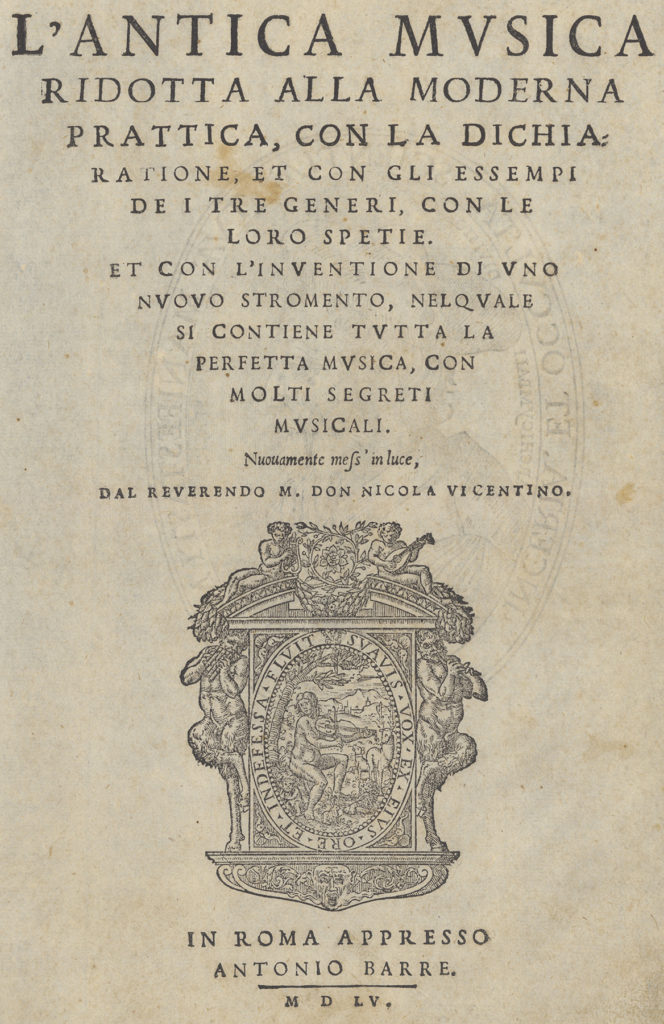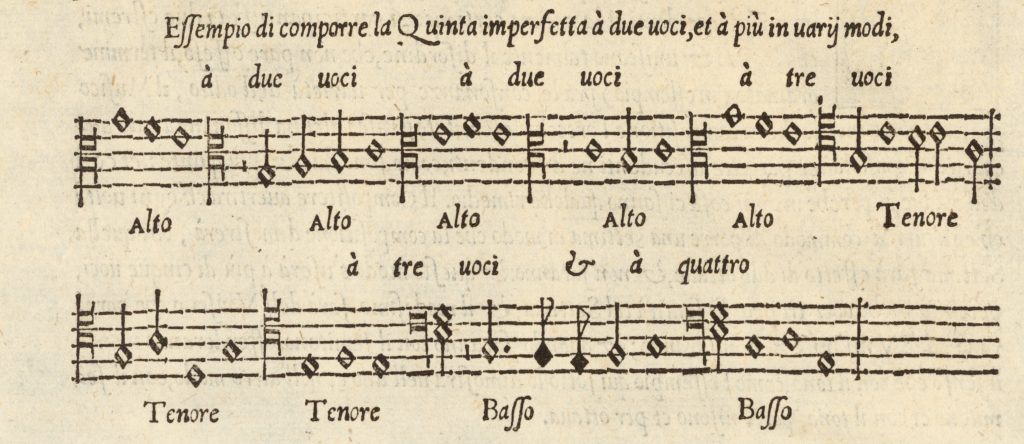Kontrapunktwerkstatt XVII. News and (Digital) Perspectives on «Vicentino21»
On 7–8 May 2021, the Schola Cantorum Basiliensis FHNW hosted the seminar Kontrapunktwerkstatt XVII. Digitalisierung in Forschung und Lehre (‘Counterpoint Workshop XVII. Digitization in Research and Teaching’), organized by the Music Theory department of the Schola in collaboration with the Institut für Musikforschung of the University Würzburg (Germany). For some years now, these meetings had become an important moment of exchange and discussion of various aspects of music theory and musicology. The main topic of the seminar was the digitisation process applied to music teaching and research. A very topical issue at the moment: due to restrictions caused by the Covid-19 epidemic, the seminar itself had to be held in digital form.
For the research project Vicentino21 it was an opportunity to present and discuss some strategies adopted to achieve the main goal of the project: to publish a digital critical edition of Nicola Vicentino’s treatise L’antica musica ridotta alla moderna prattica (Rome 1555).

The guidelines of the project were presented by Martin Kirnbauer, head of the research project funded by the Swiss National Science Foundation. He explained the main goals and some critical points concerning the preparation of the digital edition. The adoption of some formats which have become commonly used in the scientific field, such as TEI (Text Encoding Initiative) and MEI (Music Encoding Initiative) formats, raises several problems regarding the adequate digital representation of specific concepts concerning the expanded sound space imagined by Vicentino, including a complex microtonal system that is very difficult to represent with current digital tools.
In his presentation, Luigi Collarile discussed the main strategies adopted for the preparation of the critical edition. The collation of all preserved copies of the print will be carried out, in a first phase, using the Traherne Digital Collator, a digital application developed by the University of Oxford for collating ancient editions. In preparing the critical edition of Vicentino’s preserved music, the suite Aruspix, a software application for the optical recognition, the superimposition and the collation of early music prints developed by the RISM Digital Center (Switzerland), will be used. It allows a digital collation of the copies and a digital transcription of the musical text in MEI, which then can be rendered with Verovio.
Rolf Wissmann presented Transkribus, a comprehensive platform for the digitization, al-powered text recognition, transcription and searching of historical print documents and manuscripts. The application was used to transcribe a copy of Vicentino’s edition. It will provide the basis for a critical edition in TEI format, which will be adopted for the development of the digital critical edition.

The presentation of Johannes Keller’s PhD project “What is an ‘arciorgano’?” was an opportunity for an immersion in the musical practice codified by Vicentino. One of the central characteristics of Vicentino’s ‘musical practice’ is the injection of additional interval sizes into 16th-century polyphony. To put this idea into practice, Vicentino needed to challenge established concepts of music theory and education. The PhD project attempts to isolate and critically examine these challenges and unconventional concepts. Three examples were demonstrated in this presentation: 1) the transfer of the three Greek genera (defined by the diatonic, chromatic and enharmonic tetrachord) into a meantone environment with a neutral whole tone. 2) the strict conceptual separation of melodic and harmonic intervals. 3) Entirely new counterpoint mechanisms, such as the two-part progression from a major third to a minor third by contrary movement (involving the ‘diesis minore enarmonico’ as melodic intervals).

In a workshop, Martin Kirnbauer, Luigi Collarile and Johannes Keller discussed together with Anne Smith some questions concerning the practice of composing proposed by Vicentino. The team presented the scheme adopted for the weekly (digital) exegesis meetings on Vicentino’s text, which aim to create a commentary and the translations of the text into German and English. For this purpose, two chapters of the Secondo libro della prattica musicale were examined. In the case of chap. IX, they highlighted some problems of the original text, particularly with regard to the content of the musical examples.
The first study day was opened by the seminar proposed by Johannes Menke entitled “Klangaufbau und Kadenzen in Polyphonie der Renaissance” (‘Sound structure and cadences in Renaissance polyphony’).
There program of “Kontrapunktwerkstatt XIV” included the presentations of three other projects.
David Mesquita and Florian Vogt presented the interactive digital platform Singing upon the (Note-)book. The main aim is to bundle practical knowledge on improvised counterpoint and link it to a new practice opportunities offered by the digital interaction.
Andreas Haug with his team based in Würzburg (Alexander Hartelt, Kelly Landerkin, Felix Pöppel and Johann Schuppe) presented the new digital platform Corpus monodicum online, which has brought together the results of a long-term publishing project. New tools for more accurate cataloguing and transcription of sources have been developed for the new digital format, which offers numerous advantages for faster and more efficient searching.
Cristina Raurich presented her PhD research project (Schola Cantorum Basiliensis FHNW, University of Würzburg), dedicated to the analysis of a recently discovered Aquitaine manuscript.
Comments
No comment posted about Kontrapunktwerkstatt XVII. News and (Digital) Perspectives on «Vicentino21»